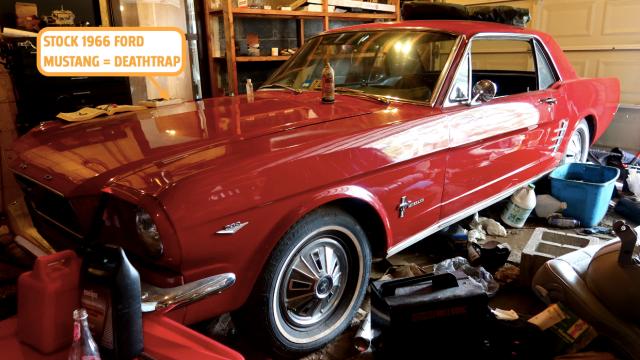I’m a huge fan of keeping old cars stock. Look at my fleet of hoopties, and you’ll see that the only vehicle with modifications is the one that I ruined with a lift kit. But now I’m working on a 1966 Ford Mustang, and I simply cannot in good conscience keep it stock. It’s just too dangerous.
If I — a person who drove a $US500 ($647) postal Jeep 5,633 km across the country after repairing its frame with a $US100 ($129) Harbour Freight welder — call something dangerous, what I’m really saying is it’s a deathtrap. And that’s what I’m saying about my brother’s 1966 Ford Mustang, which is wild, because it’s no different than a lot of other vehicles from its era.
The car is gorgeous. The Candyapple Red paint still pops, the body doesn’t have a spot of rust, the powertrain has only been driven few miles (it hasn’t been registered since 1997), and everything is completely bone-stock, just as the pony car gods intended.
The problem is, I can’t keep the vehicle in factory-original form, and you can thank this thing right here:
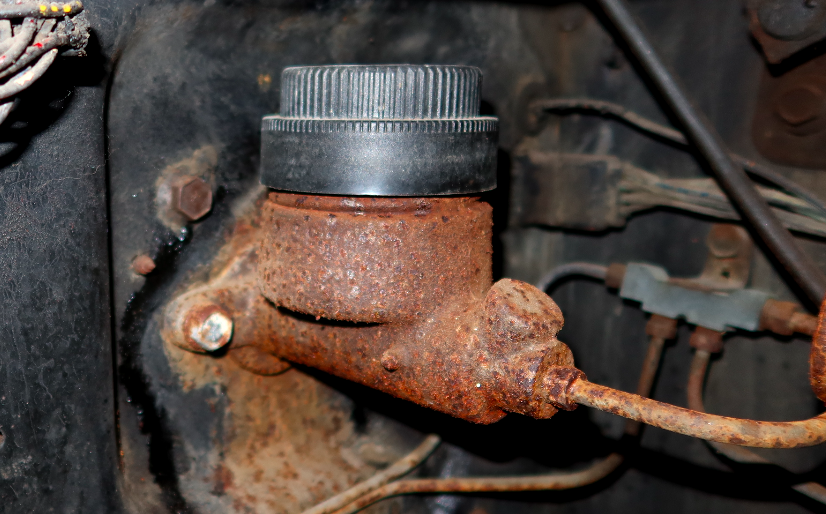

It’s the brake master cylinder, and while the more mechanically inclined among you may think it’s obvious why the component above has me concerned, I don’t think the layperson does. So let’s compare that master cylinder to one from my 1991 Jeep Cherokee:
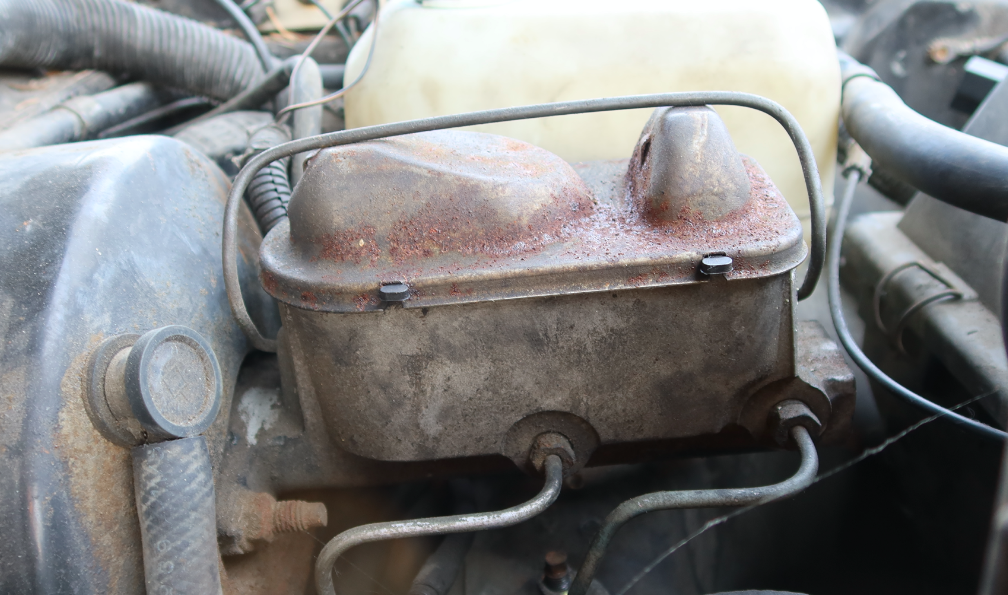
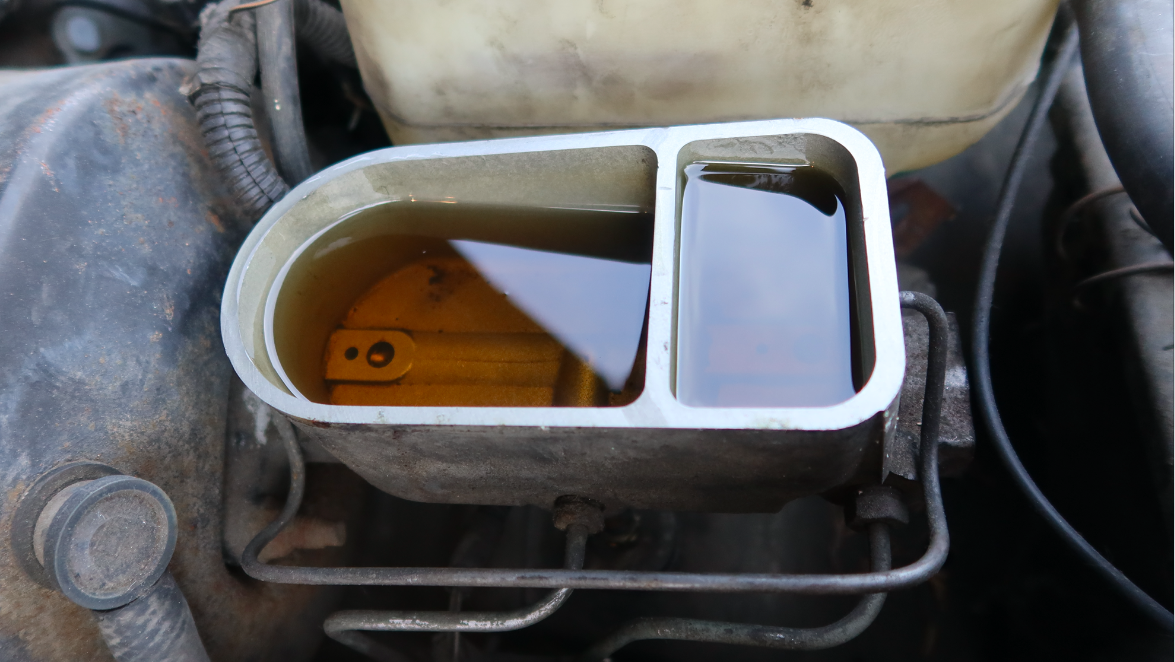
You’ll notice how the original 1966 Mustang master cylinder has a single reservoir, or “bowl,” while the Jeep master cylinder is a dual-bowl unit.
The latter is much, much safer, but before we get into why, let’s first talk about how a braking system works, focusing on the hydraulics. I describe it all in the video below, but here’s a short description: When you press your brake pedal, you push a piston (or pistons), which pushes liquid brake fluid through lines and hoses. The brake fluid transfers (and allows for the multiplication of) that force, from your foot to the callipers or wheel cylinders, which press friction material against your car’s spinning discs or drums to stop the vehicle.
The key quality of the fluid is its incompressibility under a variety of conditions. As an analogy, imagine you have to press a stiff button on a wall that is a few feet out of reach. To help you, let’s say you’ve got two objects to choose from: a floppy spring and an extremely stiff spring. Which object would you choose to push the button?
You’d use the stiff spring, of course, because its incompressibility allows you to transfer more force to the stiff button. This may not be the greatest analogy, but the same idea holds for a braking system. When you press the pedal, you want to make sure that the piston your pedal is pushing in the master cylinder is pressing against something incompressible (like the stiff spring), so that force can be transmitted to each wheel. That incompressible fluid is liquid brake fluid. (If you’re having a hard time imagining a liquid as “incompressible,” keep in mind that the liquid is constrained inside pipes, so it can’t just flow anywhere. You’re pushing a column of liquid on one end, so it has to move toward the other end).
Gas in the braking system compromises performance because gases tend to be highly compressible (like the floppy spring). Gas can get into a braking system a number of ways, including via improper bleeding or via boiling due high braking temperatures or proximity to exhaust. Even more worrisome than gas in the fluid is a hole in a brake line or hose creating an open system that won’t allow for pressure buildup.
The point is: For your brakes to work at all, you have to have an incompressible fluid in completely sealed lines. All it takes is compromised fluid or a leak in a line and that’s it: your brake system is toast! If your parking brake is properly adjusted (and let’s be real, most aren’t), then you can use that to slow down, but even then, parking brakes just grab your rear wheels, and it’s the front wheels that offer the vast majority of stopping force.
Long story short: You do not want a brake line to go bad. But it happens. That’s when you’re going to want a dual reservoir master cylinder.
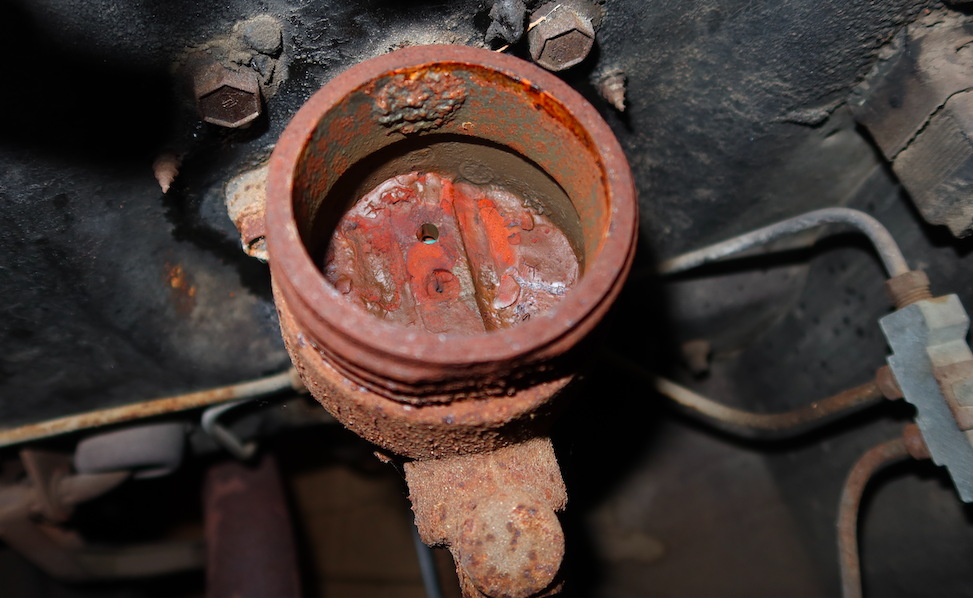
Notice how the old master cylinder is bone-dry, with plenty of rust inside the reservoir. This is the case because, while replacing some crusty fuel lines, my brother accidentally kinked the long brake line going to the rear wheels, creating a tiny pinhole leak.
Because the Mustang has a single bowl master cylinder, the entire braking system is all part of a single connected circuit. So, that single pinhole leak drained all of the fluid from the system, rendering the brakes totally useless.
It’s for this reason that I — a man with “stock is sacred” tattooed inside his lower lip — had no choice but to implore my brother to buy this dual reservoir master cylinder:
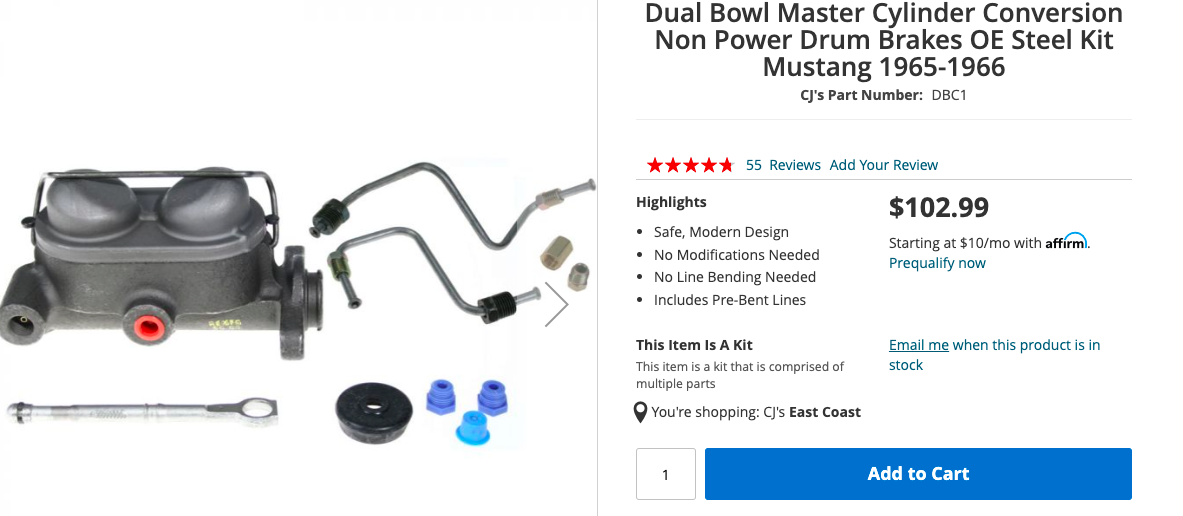
In my lifetime, I’ve had two vehicles lose brakes due to leaks. My 1991 Jeep Comanche and my 1992 Jeep Cherokee both had rust create eat through rear brake lines causing pinhole leaks. My landlord’s $US1 ($1) Oldsmobile had the same problem. Often times, these leaks happen suddenly and without warning.
Luckily, neither my landlord nor I ended up careening into a car in front of us, because my Jeeps and my landlord’s Olds have dual reservoir master cylinders. This means that, even though the rear braking circuit lost all of its fluid, the front circuit — which is entirely sealed off from the rear — remained effective.
If my brother had been driving when his brakes sprung a leak, he’d have lost all ability to stop his 1,361 kg red pony, and he would almost certainly have crashed.
I’ll be installing a dual reservoir unit on my brother’s Mustang soon, because the thought of pressing my brake pedal and absolutely nothing happening, all because of a tiny rock or some corrosion that I somehow missed, scares the crap out of me. And, if you own any one of dozens of pre-1970s cars, it should scare the crap out of you, too.
